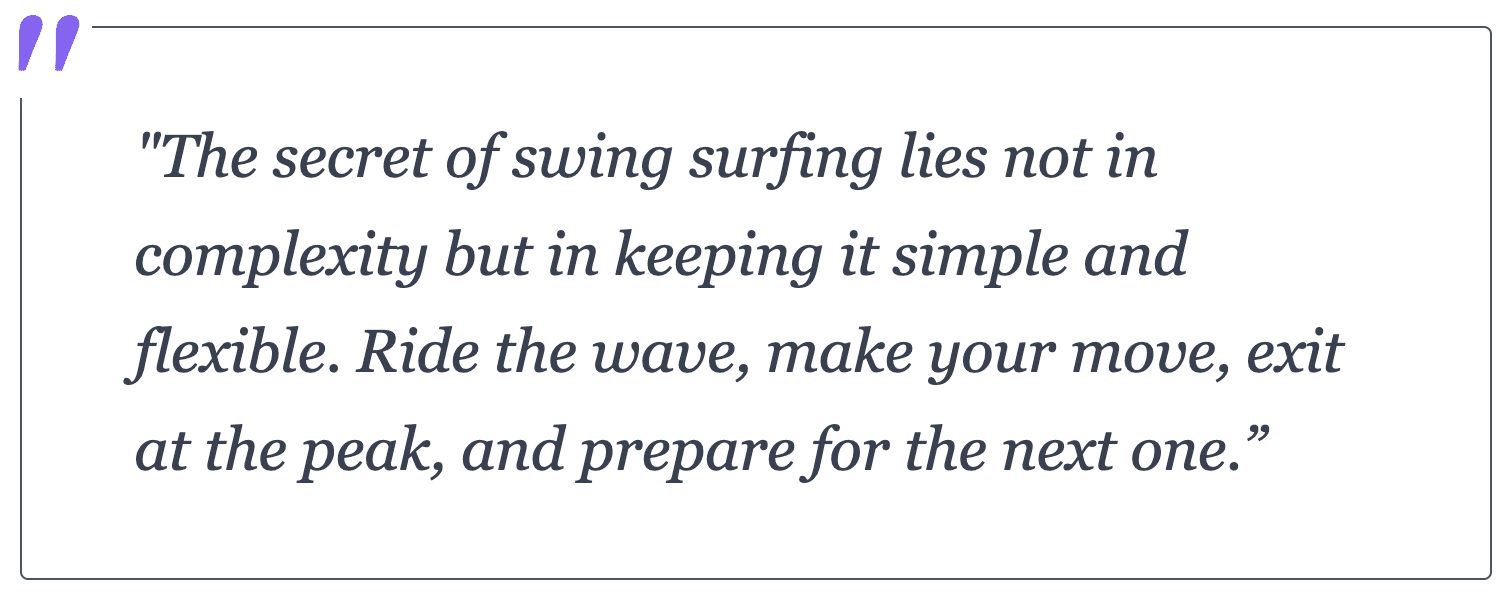Trading the Waves like a Surfer: The Art of Swing Surfing
Trading the Waves like a Surfer: The Art of Swing Surfing
By Steve Gomez

Have you ever thought about what time frame is best to trade in? The truth is, any time frame can bring success. But what if there was a way to ride the market like a pro surfer rides a wave? Welcome to **Swing Surfing** — a unique approach to market trading. In this blog post, we will delve deep into the concept of swing surfing, exploring its every nook and cranny.
The Swing Surfing Philosophy
Swing surfing is not your traditional swing trading. It’s about becoming one with the market, appreciating its ebb and flow, and making the most of it. Swing surfing usually consists of one to three-day trades or, to put it more accurately, one and a half to three days.
Inspired by the fluidity and grace of surfers, as a swing surfer, you position yourself accurately, riding the momentum of the market and then exiting at the peak. It’s a game of precision, timing, and intuition, characterized by a series of nimble moves.

IMPORTANT NOTE: Unlike actual surfing, swing surfing doesn’t require a surfboard, an ocean, or even a good sense of balance. All you need is a desire to trade creatively!
Positioning for the Perfect Entry
The first step in swing surfing is to accurately position yourself for the best possible entry. In the context of market trading, it means setting yourself up for maximum profit potential. As a swing surfer, you should constantly be on the lookout for the optimum point to enter the market, much like how a surfer assesses waves for the best surfing opportunity.
Paddling and Adding to the Position
Once you have positioned yourself, the next step is to paddle. In trading terms, this implies adding to the position. You take on more risk, banking on the momentum of the market. This step is all about capitalizing on the market momentum and increasing the size of your position to reach your profit objectives quicker.

Performing Cutbacks and Exiting
In surfing, cutbacks are dramatic changes in direction mid-wave. When swing surfing, you do the similar by constantly adapting to market changes. The final part of swing surfing is to bail out before the mess comes in. Traders ride the profit wave, but instead of waiting till the wave ends and the mess begins, the key is to exit right at the crest of the wave. This technique ensures you take home the most profit and avoids potential losses.
Re-positioning for the Next Wave

Once the ride is complete, you go back to the start. Look for the next best entry point, ride the wave of profit, and exit at the peak. Swing surfing is about repeating this cycle, over and over again, across different market conditions.
The Simplicity and Beauty of Swing Surfing
Much like surfing, swing surfing is simple but beautiful. You don’t have to be an expert trader or even an actual surfer to master this concept. This simple trading strategy allows you to constantly stay one step ahead of the market, maximizing your profit potential.
